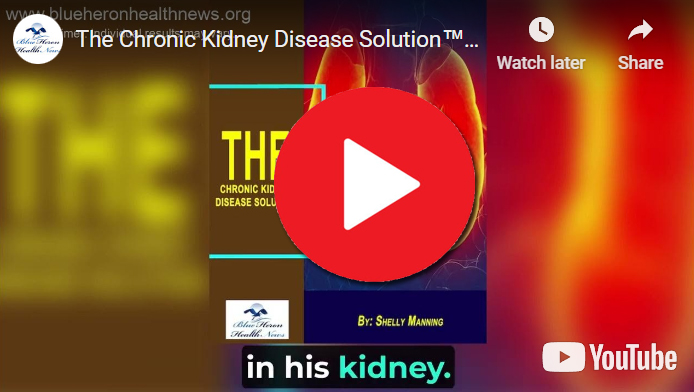
The Chronic Kidney Disease Solution™ by Shelly Manning It is an eBook that includes the most popular methods to care and manage kidney diseases by following the information provided in it. This easily readable eBook covers up various important topics like what is chronic kidney disease, how it is caused, how it can be diagnosed, tissue damages caused by chronic inflammation, how your condition is affected by gut biome, choices for powerful lifestyle and chronic kidney disease with natural tools etc.
How can one manage chronic kidney disease with high potassium levels?
Managing chronic kidney disease (CKD) with high potassium levels, or hyperkalemia, involves a multifaceted approach aimed at preventing dangerous complications, such as heart arrhythmias. Potassium is an essential electrolyte, but elevated levels can be life-threatening, especially in CKD patients whose kidneys struggle to excrete excess potassium. Here’s a comprehensive guide on managing hyperkalemia in CKD:
1. Dietary Management
Potassium Restriction
- Purpose: Reducing dietary intake is crucial since the kidneys’ ability to excrete potassium is compromised.
- Recommendations:
- Avoid High-Potassium Foods: Limit intake of bananas, oranges, potatoes, tomatoes, spinach, avocados, nuts, seeds, and dairy products.
- Portion Control: Even lower-potassium foods should be consumed in moderation.
- Cooking Methods: Leaching potassium from vegetables by soaking and boiling them in water can reduce their potassium content.
- Dietitian Consultation: Work with a dietitian to develop a balanced meal plan that meets nutritional needs while restricting potassium.
Use of Potassium Binders
- Purpose: Medications that bind potassium in the gastrointestinal tract can help reduce serum potassium levels.
- Examples:
- Sodium Polystyrene Sulfonate: Often used in acute management, but has potential side effects like gastrointestinal issues.
- Patiromer: Binds potassium in the colon, suitable for chronic management, and has fewer gastrointestinal side effects.
- Sodium Zirconium Cyclosilicate: Another option that works similarly to patiromer.
2. Medication Management
Review and Adjustment of Medications
- Purpose: Certain medications can raise potassium levels and may need to be adjusted or discontinued.
- Medications to Review:
- ACE Inhibitors and ARBs: Commonly used for blood pressure and proteinuria control but can increase potassium levels.
- Potassium-Sparing Diuretics: Such as spironolactone, should be avoided or used with caution.
- NSAIDs: Can impair kidney function and exacerbate hyperkalemia.
- Beta-Blockers and Certain Antibiotics: These can also affect potassium levels.
3. Monitoring and Regular Check-Ups
Serum Potassium Monitoring
- Purpose: Regular blood tests are essential to monitor potassium levels and kidney function.
- Frequency: The frequency of monitoring depends on the severity of hyperkalemia and changes in treatment plans.
ECG Monitoring
- Purpose: High potassium levels can affect the heart’s electrical activity, so ECG monitoring is necessary, especially in severe cases.
- Signs of Concern: ECG changes such as peaked T waves, prolonged PR intervals, or widened QRS complexes may indicate dangerous levels of hyperkalemia.
4. Emergency Management of Severe Hyperkalemia
Acute Interventions
- Calcium Gluconate: Administered intravenously to stabilize the heart’s electrical activity.
- Insulin and Glucose: Insulin helps shift potassium from the blood into cells, and glucose prevents hypoglycemia.
- Sodium Bicarbonate: Used in cases of acidosis, it can help shift potassium into cells.
- Beta-2 Agonists: Such as albuterol, can also promote the shift of potassium into cells.
- Dialysis: In cases of life-threatening hyperkalemia or when other treatments are ineffective, dialysis is used to remove excess potassium from the blood.
5. Lifestyle and Long-Term Management
Fluid Management
- Purpose: Adequate hydration can help maintain kidney function and facilitate potassium excretion.
- Considerations: Fluid intake should be individualized based on the patient’s overall fluid status and kidney function.
Exercise and Physical Activity
- Purpose: Regular physical activity can improve overall health and well-being.
- Cautions: Strenuous exercise can lead to muscle breakdown, releasing potassium into the bloodstream. Patients should discuss appropriate activity levels with their healthcare provider.
Patient Education and Support
- Dietary Education: Patients should be educated on identifying high-potassium foods and appropriate dietary substitutions.
- Understanding Medication Risks: Patients should be informed about medications that can affect potassium levels and the importance of adhering to prescribed treatments.
- Emergency Preparedness: Patients should know the signs and symptoms of hyperkalemia and when to seek immediate medical attention.
6. Collaborative Care and Regular Follow-Up
Multidisciplinary Approach
- Healthcare Team: Collaboration with nephrologists, dietitians, pharmacists, and primary care providers ensures comprehensive care.
- Regular Assessments: Routine follow-ups to monitor kidney function, potassium levels, and overall health status are crucial.
Personalized Treatment Plans
- Individualized Care: Treatment plans should be tailored to each patient’s specific condition, including their stage of CKD, comorbidities, and response to previous treatments.
- Adjustments and Monitoring: Continuous monitoring and adjustments to the treatment plan are necessary based on changes in the patient’s condition and test results.
In summary, managing hyperkalemia in CKD involves a comprehensive approach that includes dietary modifications, medication management, regular monitoring, emergency preparedness, and patient education. It requires close collaboration between healthcare providers and the patient to ensure safe and effective management of potassium levels, prevent complications, and maintain overall health.
The Chronic Kidney Disease Solution™ by Shelly Manning It is an eBook that includes the most popular methods to care and manage kidney diseases by following the information provided in it. This easily readable eBook covers up various important topics like what is chronic kidney disease, how it is caused, how it can be diagnosed, tissue damages caused by chronic inflammation, how your condition is affected by gut biome, choices for powerful lifestyle and chronic kidney disease with natural tools etc.
